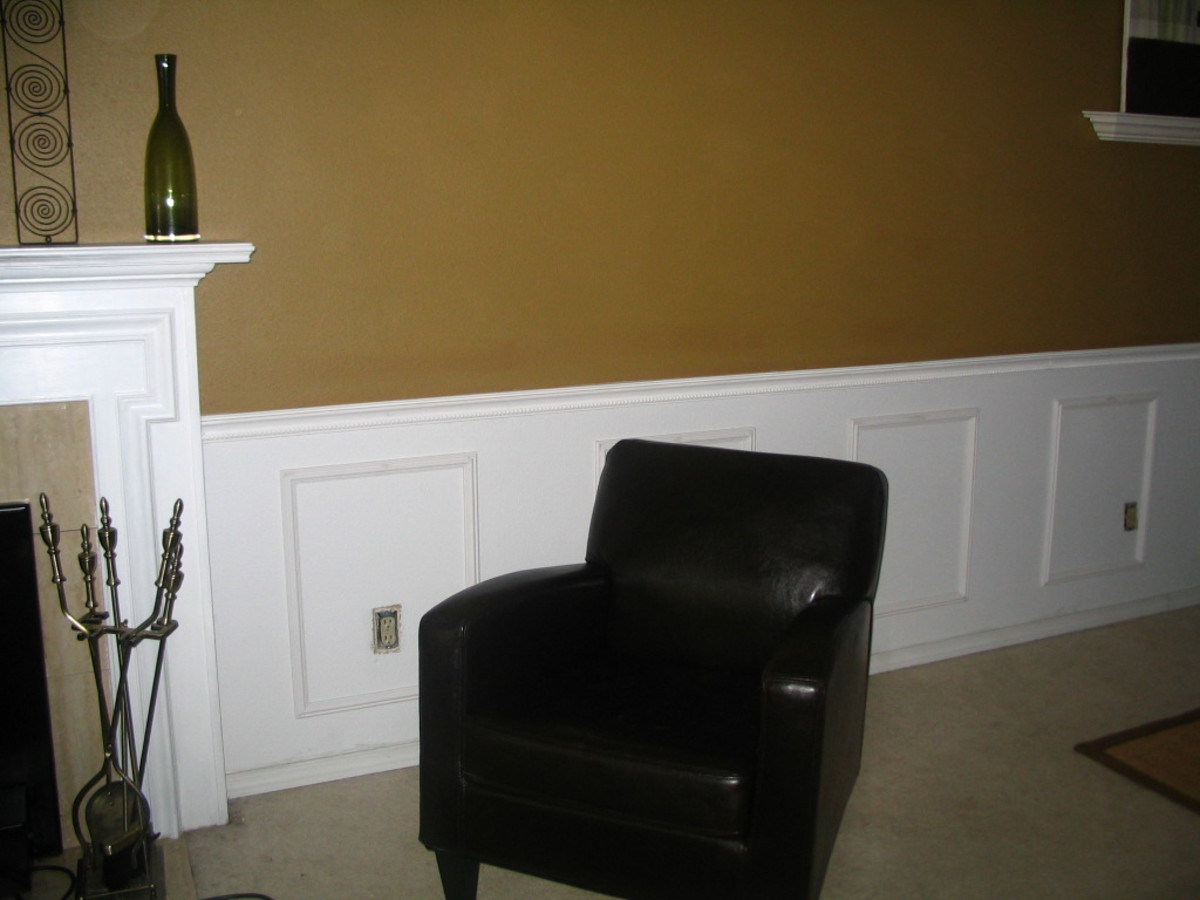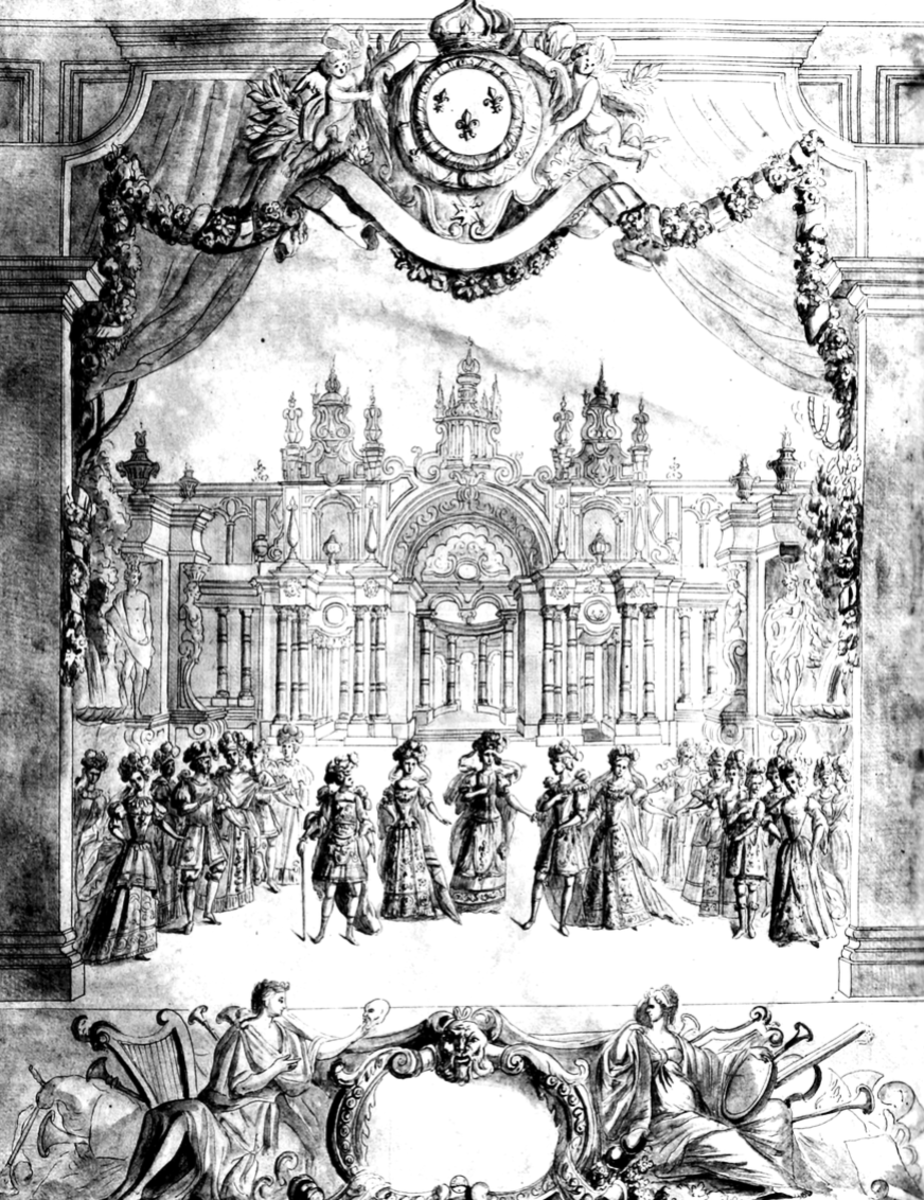- HubPages»
- Home and Garden»
- Home Decorating»
- Interior Design & Decor
Paint Like a Pro - Interior

You can paint like a professional with these tips.
Have you ever wanted to paint a room in your house, or every room in your house? Have you tried to find a painting contractor and found them all booked, or got an estimate and you don't want to part with that much of your hard earned money? If you want to get the same results as a professional and do it yourself - this article is for you.
Let's start at the beginning. Pick a room. Inside the house we have just a few variations on technique, depending on the type of room we are painting. The type of paint used in kitchens and bathrooms, and the preparation of the walls is a little different than the other rooms. Let's pick an easy room, say a bedroom first.
Before you begin, decide if the room really needs painting or not. Sometimes walls are just a little dirty, often the ceiling is fine and may not need painting. Is there a closet? How does it look? Often during a remodel, the floors will be refinished or the old carpet/tile/vinyl is going to be removed and replaced. This makes your painting job easier, as you won't have to worry so much about getting paint on the floor.
Okay, so YES the room needs painting, walls, ceiling and closet - and the trim too! Let's pick our colors! If you are not sure about a color, get a sample of the actual paint from your paint store and apply some to one of the walls to see how you like it (do the same for the trim color). Make your test patch big enough that you get a good feel for the color. If you are not in a hurry, paint your test spot(s) and go work on something else for a day or two. Walk in the room every now and then at different times of day (to see how the sunlight affects the color) and make sure you like the colors you have chosen.
Okay, you like the colors. Now it's time to buy paint. Let's do this one room at a time. Most people are painting over walls that have been painted before. If you are painting NEW walls, you need to apply a coat of PRIMER first, then the regular colored paint after the primer dries. If you do not use primer, the walls will suck up a lot more paint, and it may take 2 coats or more to make it look good. An average size bedroom will require at least one gallon and usually more, but not quite two gallons. If you use much more than that - you have a larger than average room, high walls or ceiling or maybe a huge closet. Just buy 2 gallons of the wall color. For the ceiling color, I like to take the wall color and lighten it up a few shades. You may paint the ceiling the same color, or paint it white - but it looks bad if the ceiling is darker than the walls. Ask your paint store person to mix up a gallon a few shades lighter than the wall color, or just buy white 'ceiling paint' (it's a little thicker so it doesn't splatter on you while you are painting over your head!).
Paint comes in many different sheens. That is something you may have never thought about - but bedrooms, halls, living rooms, dining rooms and closets will usually have a FLAT sheen. This is the easiest paint to work with. You can come back later and touch it up and it will blend right in. Shinier paint finishes will always show where you touch them up later, and even when applying the paint you need to keep a 'wet edge' as you roll or brush, to prevent roller tracks or brush strokes. Semi-gloss or glossy painted surfaces are easier to clean and resist mildew - that is why you will find those finishes in bathrooms and kitchens. You will have to dull the shiny finish or prime it for the new paint to stick properly in these rooms. Flat paint, and even 'egg shell' finish allows for breaks - you can stop and start anywhere without too much worry.
Trim paint is always shinier than wall paint. The reason for this is because it wears better. Trim gets dusted, washed, bumped and handled and needs to resist dirt, allow for cleaning and it just looks better - it is more visually stunning to walk into a room and have gleaming trim! So at least get semi-gloss, but I prefer gloss for the trim paint.
note: you used to have no choice - trim paint was oil based. Now it is harder to find oil based, but it is still out there. Most paint stores have it, if you want the best, shiniest finish - but you don't have to use oil anymore to achieve similar results. New acrylic latex paints with high-gloss finishes can work just as well, and they are much less hassle. You don't need separate brushes and rollers. You don't need paint thinner to clean up. And best of all - the water based paints don't smell as bad. BUT for the absolute best finish, longest lasting, hardest wearing - oil still is the best.
Trim paint is often sold by the quart - as you will need a lot less of it. One room's worth of trim can be done with less than a quart. If you are painting the doors too, you should be able to paint about 6 SIDES of doors with one quart (count the number of doors, and some doors might be facing a hall or bathroom and get a different color, so count the SIDES of the doors that need the color paint you are buying) Trim paint is more expensive than wall paint (it has more ingredients to make it dry shiny and stand up to tougher wear) so if your project is only ONE room - buy carefully, but remember if you buy 3 quarts, you might as well have bought the GALLON because the price of three quarts is always the same as a gallon.
Now you have the paint. Now don't just run in there and start slopping it on the walls! Preparation is more than half of the job. The actual painting is the fun and easy part, and clean-up is the other part, and if you prepare properly, that can be a lot easier too!
Preparation
what you will need
- clean 'rags' (I like the 'Box-O-Rags' sold in many paint stores)
- painter's tarps - one 'full panel' (9'x12') and at least one 'runner' OR if you are doing a lot of painting, go ahead and get FOUR runners and TWO full panels
- 3 or 4 small buckets (called cut bucket) they sell cheap throw away ones
- philips & regular (small) screwdriver (for taking off outlet covers and swith plates)
- small hammer (for pulling nails out of walls, tapping lids back on paint)
- '5-way painter's tool' or 2" flat blade stiff putty knife
- spackling (Red Devil brand 'One Time' is my favorite)
- 2" masking tape (NOTE: your life will be easier if you wait to buy this item until AFTER you read the section about TAPE - it makes a difference!)
- two brushes, 2 1/2 - 3", long wood handled straight bristle, the most expensive ones they sell. Cheap brush = crappy brush = crappy results = you'll be sorry later or glad later depending on how much you spent on those brushes!
- two 9" roller sleeves (see above if you wonder how much to spend on these) 3/4" knap. MY favorite are the true WOOL kind, extemely puffy ones, hold LOTS of paint, makes it really easy to load up and roll on! Great coverage! Okay - get ONE really good, wool or wool-like one, and one cheaper one for the ceiling paint if you are on a budget.
- two metal or plastic roller pans and some plastic pan liners (if you plan on painting more later, otherwise get plastic roller trays and throw them out when done)
- two 9" roller frames
- one small diposable foam roller - 4", comes in a package, package IS the tray!
- one smaller (1 1/2 - 2 1/2") brush for trim paint.
- one extension pole, must screw into handle of roller frame (many broom handles actually fit and will work nicely)
- stepladder - your ceiling height will determine how tall this ladder needs to be - it can be a small 4' ladder if your ceiling is normal 8' - I prefer the small painter's platform type ladder, it has a nice loop handle to hold onto, a very useful shelf, and the platform allows for solid place to stand for longer periods of time. We call it a 'two stepper'.
- it may be necessary to have some type of lamp - best/easiest/cheapest = one of those lightbulb sockets that plugs right into the outlet with a 100 watt bulb
- an old paint brush (for dusting off trim)
- caulk (paintable, fast drying type) and a caulking gun ( I love the type I call the Snippy Tip Pokey Thing - because you can cut the tip open with the handle, and it has a swing out long metal rod to poke into the tube and break the seal if needed)
- a painter's radio... this helps keep you moving along, makes the job way more fun... but it WILL get paint on it
- some clear safety glasses (it you are painting the ceiling)
- broom/dustpan maybe a shopvac, and an old upright vacuum if you want to really do a professional job and vacuum the carpet in the room when all done
- a big yellow 32 gallon trash bucket and some 39 gallon contractor's can liner's
- proper clothing - loose fitting, obviously stuff you don't care if paint gets on it and and old hat or free 'painter's cap' from paint store (ask for one, they have 'em) if you are painting the ceiling. Don't forget to wear crappy shoes!
- stir sticks - yes, have them shake the paint before you bring it home, but still get the sticks, they come in handy and they are free. Ask for a paint can opener while you're getting the free stuff, they give those away too.
- beer (just kidding! Though most painters do drink for some reason...)
- if you must cover furniture that you can't get out of the room - get some cheap painter's plastic, comes on a roll and folds out to cover anything
What to do first
Take the doors off. Most rooms have doors that open INTO the room you are trying to paint. They will get in the way, prevent tarps from laying flat, and you will splatter paint on the doors. Get them out of there! Just use your little screw driver and hammer, and tap the hinge pins up and out. Put the pins back in the hinge part that is still attached to the frame. Carefully angle the doors and take them OUT of the room and down the hall or into another room.
If there is furniture in the room, take it out. If you can't take it out, then hopefully the room is large and you can place the big piece(s) in the center of the room and cover those items up.
Take down any paintings, knick-knacks, anything and everything! I want to see BARE walls, and hopefully BARE floors.
Now clean the room. Sweep cobwebs down from ceiling corners if there are any. Sweep the floor or vacuum. Just do it. You are putting down your new tarps and will be kneeling on them all around the room - you don't want to find little Legos under your knee after you get the tarps all laid out.
Remove all switch plates, outlet covers, drapery hardware. Soak the swith plates and outlet covers in a bucket of hot water (this will help remove OLD paint from sloppy previous painters, and you can put back new-looking covers with NO paint on them). Put this bucket in another room, preferably in a bathtub in a bathroom not being painted. Also - do not lose the tiny little screws! If you put them in the soaking bucket - do not then later dump this bucket in the bathtub - screws will go down the drain. The bucket is in the tub so that if/when some ones knocks it over, the water will not go everywhere.
Ceiling fans, and ceiling lamps should NOT be removed. You may remove the glass cover of a ceiling light fixture, but we will just expertly tape around the base of this fixture where it meets the ceiling. Fan blades should be gently wrapped in newspaper or painters plastic if painting ceiling.
We will be applying masking tape to the top edge of the base board. This surface must be CLEAN and DRY. Use the dusting brush first, then follow with a slightly damp cloth. Do not wet the cloth with solvent or thinner or even soapy water - JUST water, and not much of that. The tape will not stick otherwise. This is most important. A good tape job prevents the paint from 'bleeding' through the edge of the tape and onto the moulding. It is MUCH easier to KEEP the paint off than to CLEAN the paint off later.
Now, the room is free and clear of dirt, debris, and doors! There is nothing in your way. If you haven't already done so - remove your watch, and jewelry, leave your cell phone IN THE HALL, empty your pockets (you will be kneeling and crawling around a lot, no need to have a bunch of stuff poking you). Plug the radio in, in the hall or another room nearby - no need to trip over it. You are ready to lay out the tarp(s). Some tarps are magically the perfect size. I love it when this happens. Most often though, I lay the runners around the perimeter of the room, and the big tarp over the middle, onto the runners. The main thing is that you get the tarps all the way to the wall, with no wrinkles, folding neatly around corners, covering every square inch of floor. If you are clumsy, you may apply tape to certain places on the tarps where they overlap or fold, to prevent trip-points.
TAPE
Okay, tarps down - time for taping! ALWAYS buy the most expensive tape. You CANNOT save money by buying cheap tape. It WILL let you down. The cheap tape starts out pissing you off by not coming off the roll well. It will tear, it will rip... Then it wont stick properly. Then you may think you got it to stick, and it will come up - or worse it will act like good tape, act like it's doing it's job - then it will show you it's true colors when you remove it and it has allowed paint to bleed through and get all over the trim. The wood trim. The stuff you were trying so hard to keep from getting paint on! Or it will come off in shreds. Or it will take the finish off the trim as you remove it. DON'T TRY to SAVE MONEY ON TAPE. Tape is cheap compared to doing things over, or doing things you would not have had to do if the tape had not let you down.
BUY 3M Professional Painter's Tape. BLUE for finished wood trim, or painted trim if you must leave the tape down for more than one day, WHITE for painted trim if you want better adhesion and will be removing THAT day. Do not be fooled by '3M painter's tape' that comes in a 3-pack and looks the same as the other stuff. Just because if says 3M doesn't mean it is the real deal. The stores have figured out how to get the name right and still sell you cheap tape. A real paint store may be the only place to get the real tape.
Before you tape - inspect the trim along the floor (the base board). Is there a little gap between the trim and the wall? If so this must be caulked. You cannot easily tape this in such a way as to get a professional look in the end if there is a gap in this area. Paint will run down behind the base board into this gap and look like crap. The key to good caulking is to cut the tip VERY slightly. The TINIEST hole in the tip is what is desired. Apply the caulk quickly and smoothly along a small area. Stop. Release pressure on the handle of the caulking gun. Lay it down, out of the way with a paper towel under the tip to catch the caulk that WILL ooze out. Wet your finger, drag it along the fresh caulk area. The wetter the finger, the smoother this will go. You should see no lines in the caulk, no globs of caulk, just a wonderfully now seamless place where wall meets baseboard. Work your way around the room. You may also caulk the trim around doors and windows, however it is not critical to the success of the job as is the baseboard caulking.
Now go take a break. Eat lunch. Go run some errands. Whatever. Leave the caulk undisturbed. Your next task is to tape where you have just caukled. You may tape off outlets and swithches while waiting.
Check walls for holes. With your finger, apply a little One Time. Caulk takes 20 minutes to dry, if you got the quick-dry kind.
We will be applying tape ONLY to horizontal surfaces that will receive splatter. Tape is not for cutting in. Do not tape around doors, windows, window panes on wood windows. We will be PAINTING right up to the edge, and without tape. (don't worry - it's latex. you have water... a wet rag wrapped over a putty knife can clean paint off wood faster and cheaper than you can tape it if you screw up!).
Tape the base trim
Tear off a section and practice laying it onto the top edge of the trim that is perpendicular to the wall. Do not fold it down. Let it wing out, away from the wall. It is like a sheild, keeping falling drops of paint from landing on the rest of the trim piece. When you get good, you will be able to spool the tape right off of the roll without having to rip pieces off as you go. Don't forget window sills.
Now you can paint!
Start rolling in a corner and go around the room, one wall at a time. Stop rolling before you hit the ceiling. Walls first. Ceiling last. Why? If you get a little wall paint on the ceiling its okay. Then if you get a little ceiling paint on the walls - it's MUCH easier to cut-in the wall to the ceiling, than to have to do a final cut-in working over your head, painting the ceiling.
Cutting In
Good brush work makes or breaks a job. Get sloppy and every one will notice. Do a great job and few people will notice (unless they are painters). That's what you want. When the paint is where it is supposed to be and not where it is not supposed to be - no one notices. Your eye is drawn to the imperfections. Straight lines are invisible, Get a blob of paint in the wrong place and THAT is what people will see. Just practice.. Dip your brush in just a little bit. Wipe off the excess. Drag the brush along the edge you want to paint. Start farther away than you need to be. Feel how the brush moves the paint closer to the edge as you push down a little harder. See the bristles move away from the edge as you raise up. Move the edge of paint where you need it to go by raising and lowering the brush, increasing and decreasing the pressure. You have to experiment a little to get just the right amount of paint, just the right pressure... More paint means you move faster, but faster means mistakes happen faster! ha ha! This is the fun part! Make it your masterpiece! This is truly the finishing touch.
As you finish rolling, take the roller tray and rollers outside, to the garage, where ever you can leave them out of your way. Then as you finsh cutting in, take the cut bucket and brushes there too. Keep the work area free of clutter.
If you are painting doors and base boards, window trim, etc. now is the time to do those things. Carefully and quickly peel the tape from the base board. Wad it up as you go, then place it in the garbage can along with tape from around outlets and switches, plastic from around fan blades...
Now put the doors back on. Tape off knobs. It's easier. You can try to cut around them - but you better be good! Use the little 4" foam roller and one of the brushes to detail the doors. Wood doors will have a pattern to the grain of the wood. Your brush strokes should follow this pattern. Whichever way the grain of the wood is going, that is the direction the brush strokes should go. Watch for drips in the corners of raised panel doors.
Now go clean up the old switchplate/outlet covers, dry them and re-install them. Re-install drapery hardware if needed.
Roll/fold tarps in such a way as to keep any drips or debris from getting on carpet/floor. Take them outside. Shake them out. Fold properly.
Leave furniture out of room if possible - you don't want to bump past wet walls and doors.
Clean up expensive brushes and roller sleeve with hot water. Throw away plastic liners and empty cans... You are done. Good job.
Please see my tips on Exterior Painting here:






